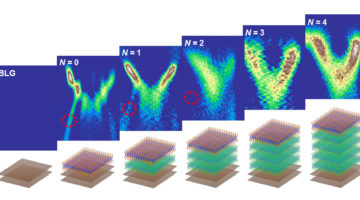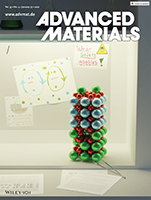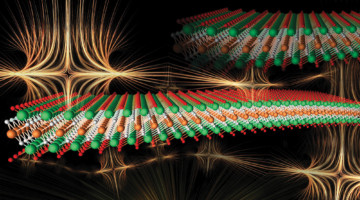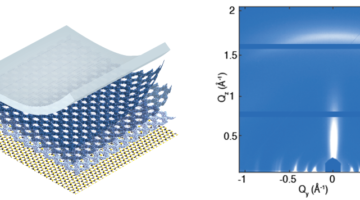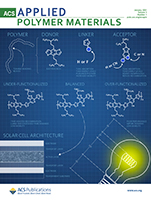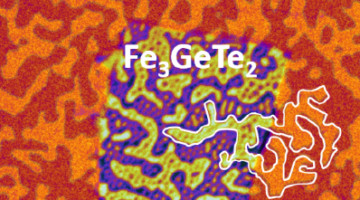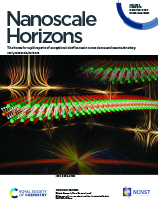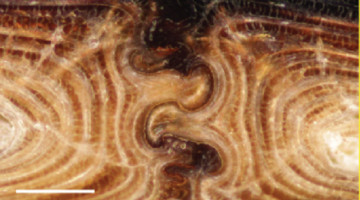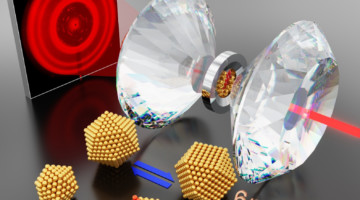ALS studies highlighted interactions that can occur between technologically intriguing 2D materials and the substrates that physically support them. The results provide important insights into the issue of non-negligible interlayer coupling and demonstrate the potential for tuning single-layer properties through substrate engineering. Read more »
Identifying Ionic and Electronic Charge Transfer at Oxide Heterointerfaces
Researchers identified how ion and electron transfer naturally balance at the LaAlO3/SrTiO3 oxide heterointerface, affecting the band alignment and magnetic signature of the interface. The results show that Sr ions are more mobile at the interface than in the bulk, implicating a high importance of ionic charge transfer in oxide heterostructures. Read more »
2D MXene Shows Evidence of a Magnetic Transition
A variety of experiments, including ALS x-ray studies, provided direct evidence of a magnetic transition in a 2D compound called a MXene (pronounced “maxene”). The finding adds new functionality to a family of materials with numerous ways to fine-tune properties for applications ranging from spintronic devices to electromagnetic shielding. Read more »![]()
![]()
Stacking the Deck for Custom-Built Hybrid Materials
Researchers fabricated an electronically coupled heterostructure from a novel semiconducting 2D polymer and a 2D transition metal dichalcogenide. Dramatic optical and electronic changes emerged as polymer thickness decreased, underscoring the potential for the discovery of emergent phenomena in studies of hybrid heterostructures. Read more »
Functionalization of Benzotriazole-Based Conjugated Polymers for Solar Cells: Heteroatom vs Substituents
Understanding the structure-property relationship is important when designing new conjugated polymers for high-efficiency polymer solar cells. Rech et al. systematically explore the impact of a variety of functional groups, including nitrogen heteroatoms, fluorine substituents, and cyano groups. Read more »
From Stripes to Skyrmions in a Surprising Material
Researchers showed that tiny bubbles of ordered spins (skyrmions) can be induced to form in a material previously considered incompatible with skyrmion formation. The discovery opens up a new class of material systems that exhibit technologically desirable nanoscale features attractive for spintronic applications. Read more »![]()
![]()
Microstructures Explain Beetle Exoskeleton Strength
Using microtomography and other techniques, researchers identified the exoskeletal toughening mechanisms that explain the crush resistance of the aptly named diabolical ironclad beetle. The observations could be applied in developing tough, impact- and crush-resistant materials for joining dissimilar materials. Read more »![]()
![]()
Evidence of a magnetic transition in atomically thin Cr2TiC2Tx MXene
2D magnetic materials have recently attracted significant interest as model systems to understand low-dimensional magnetism and for potential spintronic applications. Here, we report on synthesis of Cr2TiC2Tx MXene and a detailed study of its magnetic as well as electronic properties. Read more »
X-Rays Reveal Architectural Clues to the Crush-Resistance of Diabolical Ironclad Beetles
The appropriately named diabolical ironclad beetle has an incredibly crush-resistant exoskeleton, which could serve as a blueprint for tougher materials. To see, in microscopic detail, what makes the beetle so uniquely ironclad, researchers used the ALS to explore a protective covering known as the “elytra,” its abdomen, and other parts. Read more »
Stress-Induced Structural Transformations in Gold Nanocrystals
Metallic nanocrystals are widely used in catalysis, electronics, photonics, and sensing applications, but our understanding of their stability under operational stresses is limited. These studies of gold nanocrystals at high pressures found that large-scale structural transformation is possible and must be considered at the nanoscale. Read more »
- « Previous Page
- 1
- …
- 9
- 10
- 11
- 12
- 13
- …
- 26
- Next Page »
